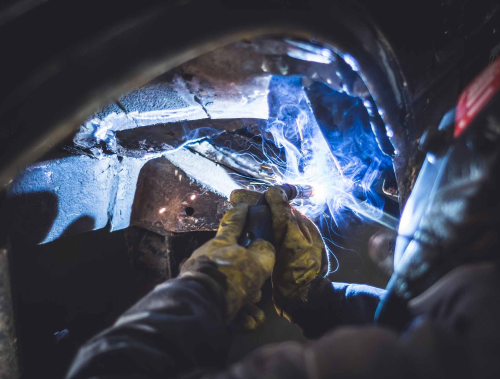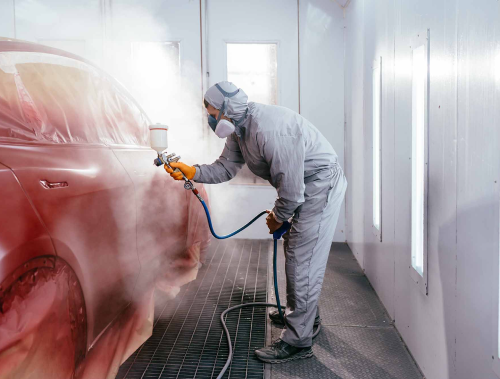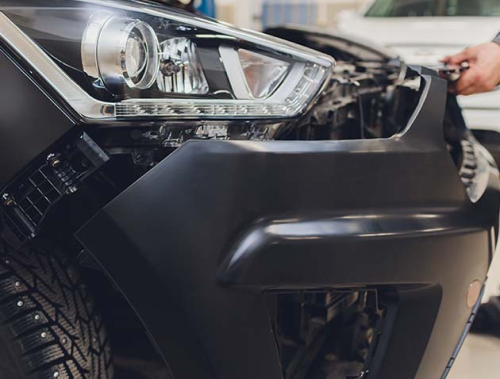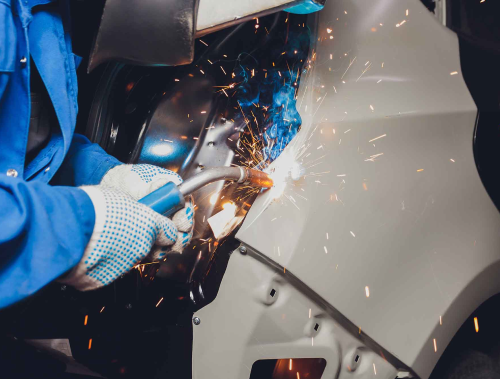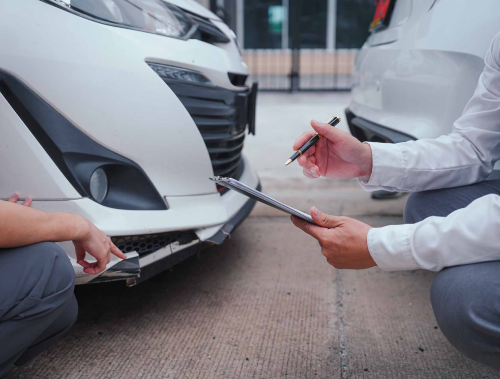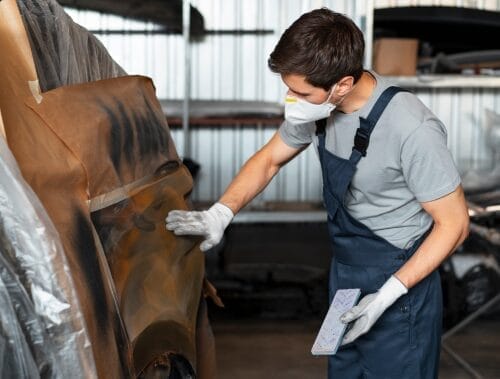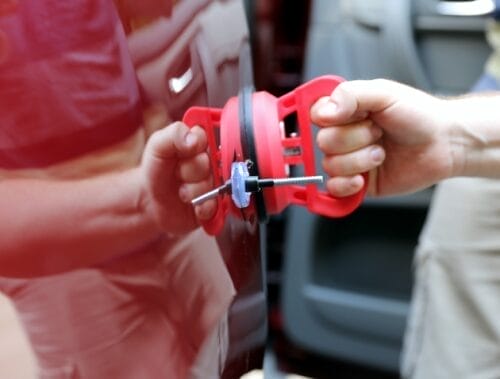Sun exposure can significantly impact your car’s exterior, leading to a range of cosmetic and structural issues. For car owners, understanding these effects is crucial to maintaining their vehicle’s appearance and value. This guide will help you understand the science behind sun damage and provide insights into how you can mitigate these effects.
The Science Behind Sun Damage
Ultraviolet (UV) Rays
UV rays are a type of electromagnetic radiation from the sun. When these rays hit your car’s surface, they can break down the molecular bonds in the paint and plastic trim. This process can lead to fading, discoloration, and structural damage over time.
Oxidation occurs when UV rays penetrate the clear coat, the protective layer on top of your car’s paint. This exposure causes the paint to lose its oils, leading to a dull, chalky appearance. Oxidation can make your car look aged and poorly maintained, even if it’s relatively new.
Heat
High temperatures can accelerate the degradation of materials on both the exterior and interior of your car. Prolonged exposure to heat causes materials to expand and contract, leading to cracks and other forms of structural damage.
Inside your car, heat can cause significant damage to components like upholstery and dashboards. Leather and vinyl can crack and fade, while plastic parts can warp and become brittle. This not only affects the aesthetics of your car but can also reduce its overall value.
Types of Sun Damage
Paint Fading
UV rays cause the paint to fade by breaking down the pigments that give auto paint its color. This results in the loss of vibrancy and depth, making your car look washed out and dull. Over time, the continued exposure leads to oxidation, further dulling the paint and potentially leading to more severe damage if not treated.
Oxidation
Oxidation manifests as a chalky residue on the car’s surface. You may notice that the color looks uneven or lighter in certain areas. These signs indicate that the clear coat is breaking down and needs immediate attention to prevent further damage.
Cracking and Peeling
The clear coat is your car’s first line of defense against sun damage. When it breaks down, it can lead to cracking and peeling of the underlying paint layers. This not only looks unsightly but also exposes the base layers to environmental damage, accelerating the deterioration process.
Your car’s plastic trims and leather components are also vulnerable to cracking and peeling due to sun exposure. The heat causes these materials to dry out and lose their flexibility, leading to cracks and peeling. This damage is often irreversible and can require costly replacements.
Interior Damage
Heat can wreak havoc on your car’s interior. Dashboards can crack and warp, seats can fade and lose their cushioning, and other components can become brittle and break easily. This not only affects the comfort and aesthetics of your car but can also be a safety concern if critical parts fail.
UV rays contribute to the fading and cracking of upholstery. The constant exposure causes the materials to lose their color and strength, leading to an aged and worn appearance. Protecting your car’s interior from UV rays is essential to maintaining its condition and value.
Additional Risk Factors
Sunlight can exacerbate the damage caused by acidic substances like bird droppings, tree sap, and pollution. When these substances are left on the car’s surface and exposed to the sun, they can cause etching and staining that is difficult to remove.
Pollutants and contaminants in the air can settle on your car’s surface and, when combined with UV rays and heat, can accelerate the degradation process. Regular cleaning and protection are essential to minimize these effects and keep your car looking its best.
By understanding the science behind sun damage and recognizing the signs, you can take proactive steps to protect your car’s exterior and interior, ensuring it remains in top condition for years to come.
Preventive Measures
Protective Coatings
Applying protective coatings like wax and ceramic can significantly reduce the impact of sun exposure on your car. Wax provides a protective layer that can absorb UV rays and prevent them from reaching the paint, thereby reducing fading and oxidation. Ceramic coatings offer even more durable protection, creating a strong barrier that not only blocks UV rays but also resists dirt, grime, and water.
Frequency and Methods of Application:
- Waxing: It is recommended to wax your car every three months. Use a high-quality car wax and apply it in a thin, even layer, allowing it to dry to a haze before buffing it off with a microfiber cloth.
- Ceramic Coating: This can last from one to five years, depending on the product. The application of ceramic coating is more complex and might require professional assistance. Ensure the car is thoroughly cleaned and decontaminated before applying the coating in small, circular motions.
Car Covers and Sun Shades
Car covers and windshield sun shades provide an effective shield against the sun’s damaging rays. They help keep the car’s exterior and interior cool, preventing heat buildup that can lead to cracking and fading.
- Car Covers: Available in various materials, car covers can be custom-fitted or universal. Look for UV-resistant covers for maximum protection.
- Windshield Sunshades: These come in foldable or roll-up designs and are usually made of reflective materials to block and reflect sunlight.
Parking Strategies
Parking in shaded areas can drastically reduce the amount of direct sunlight your car receives, thereby minimizing heat and UV damage. This simple practice can extend the life of your car’s paint and interior components.
Tips for Finding or Creating Shaded Parking Areas:
- Look for Trees: Park under trees or in areas with natural shade, but be mindful of potential sap or bird droppings.
- Use Carports: If possible, use carports or covered parking structures.
- Temporary Solutions: Use portable canopies or sunshades if no permanent source of shade is available.
Window Tints and Films
UV-blocking window tints can block up to 99% of harmful UV rays, protecting the interior from fading and cracking. They also help keep the interior cooler, reducing the strain on your car’s air conditioning system.
Types of Window Films and Their Application:
- Dyed Films: These are affordable and provide good heat and glare reduction.
- Metalized Films: These offer better heat reduction and durability.
- Ceramic Films: These are the highest quality, providing superior UV protection and heat reduction without interfering with electronic signals.
Maintenance Tips
Regular Cleaning
Regular cleaning removes dirt, grime, and pollutants that can accelerate the degradation of your car’s exterior. A clean car is less likely to suffer from scratches and oxidation.
- Products: Use car-specific soaps, microfiber cloths, and soft sponges. Avoid household detergents that can strip wax and damage paint.
- Techniques: Wash your car in the shade and rinse it thoroughly to avoid water spots. Dry with a clean microfiber towel.
Inspection and Repair
Regularly inspect your car for early signs of sun damage, such as fading, chalky residue, or small cracks. Early detection can prevent minor issues from becoming major problems.
- Touch-Up Paint: Address small chips and scratches with touch-up paint to prevent rust and further damage.
- Polishing: Use a car polish to restore shine and remove minor oxidation before it worsens.
Interior Care
Conditioners and protectants can keep leather and plastic components supple and protected from UV damage. They help maintain the appearance and prevent cracking and fading.
- Upholstery: Vacuum regularly and use fabric protectants to guard against stains and sun damage.
- Dashboards: Clean with a soft cloth and use dashboard protectants that offer UV protection to prevent cracking and fading.
Conclusion
Sun exposure can cause significant damage to your car’s exterior and interior. By understanding the effects of UV rays and heat, you can take preventive measures to protect your vehicle.
Implementing preventive strategies like using protective coatings, parking in shaded areas, and applying window tints can keep your car looking new for longer. Regular maintenance and early repairs further ensure your vehicle remains in top condition despite sun exposure.

